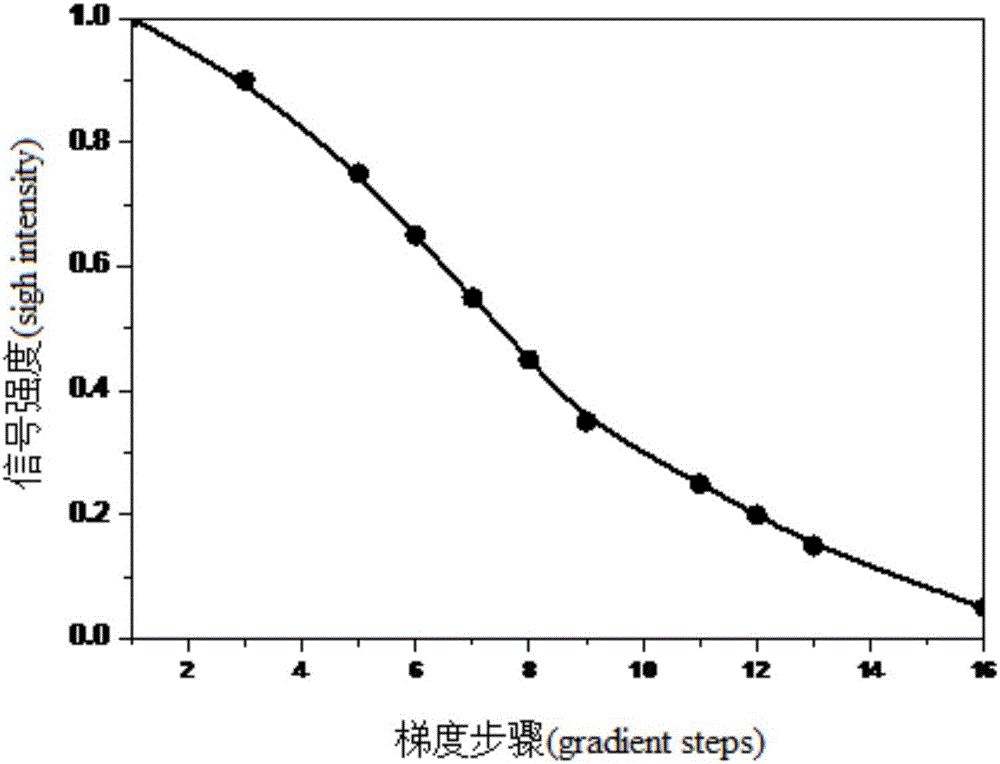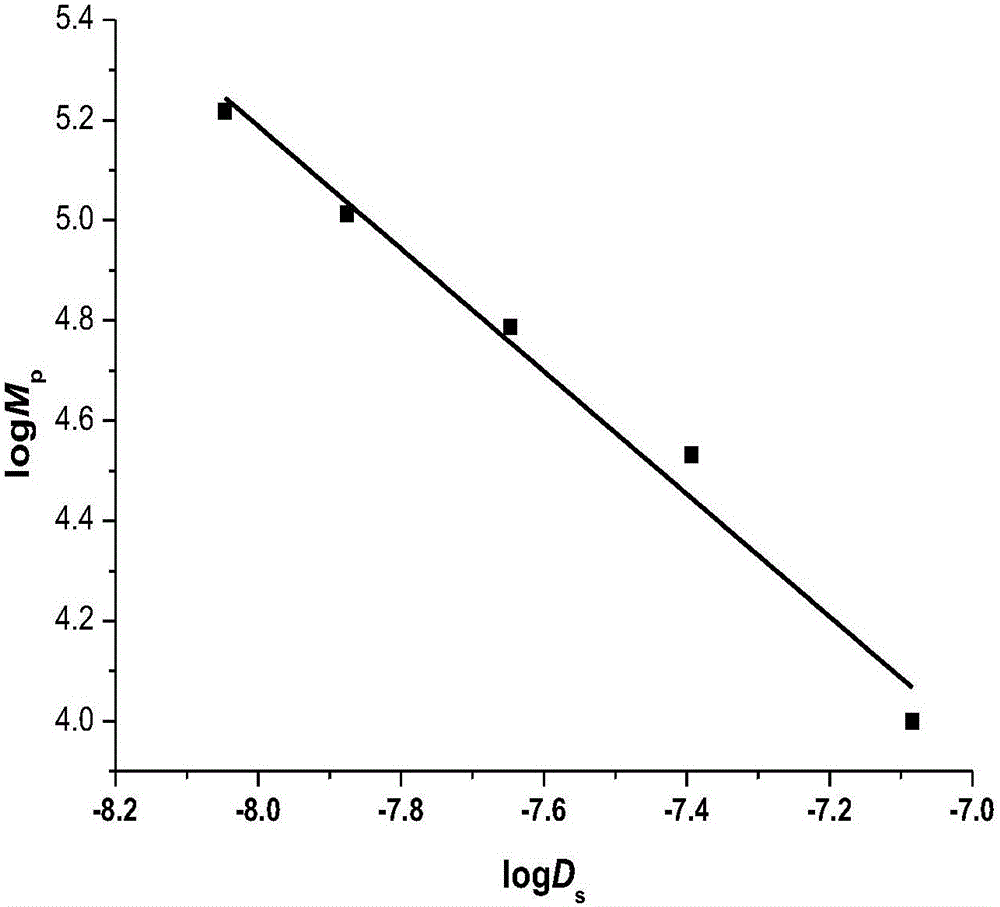Characterization method for polymer molecular weight
A polymer and molecular weight technology, applied in the field of polymers, can solve the problems of increased test cost, chromatographic column replacement, and high cost, and achieve the effects of less sample amount and solvent amount, accurate test results, and low characterization cost.
- Summary
- Abstract
- Description
- Claims
- Application Information
AI Technical Summary
Problems solved by technology
Method used
Image
Examples
Embodiment 1
[0040] The test instrument is a Bruker Ascend series 400MHZ liquid nuclear magnetic resonance spectrometer, the probe is a BBFO broadband high-resolution liquid probe, and the Z gradient field is 5.35G / mm.
[0041] 1) Instrument calibration
[0042] The instrument was calibrated for temperature over the 300-380K range using 80% ethylene glycol in deuterated DMSO standard.
[0043] Use containing GdCl 3 99% of D 2 O / 1%H 2 The self-diffusion coefficient of water was repeatedly tested with the O standard sample until the diffusion coefficient of water at 298K was 1.872e-9, so as to realize the correction of the gradient.
[0044] 2) Determination of linear polyethylene molecular weight and molecular distribution
[0045] a) Acquisition of standard curve
[0046] A range of linear polyethylenes of known molecular weight and distribution are selected from Table 1. Weigh 3 mg of sample and dissolve it in a glass tube with a caliber of 10 mm, add 6 mL of deuterated tetrachloroe...
Embodiment 2
[0056] The pulse sequence used by 1D DOSY is still ledbpg2s1d, the diffusion time parameter (D20) is adjusted to 100ms, and the gradient pulse duration varies with the molecular weight between 300-1800us. Pulse gradient strengths were set to 1% and 98%, respectively. A two-dimensional DOSY experiment was performed on the sample PE4 to obtain its 2D DOSY spectrum at 110°C, and then obtain the diffusion coefficient. 2D DOSY spectrum such as Figure 6 Shown, where, F1 dimension is the sample 1 H NMR spectrum, F2 dimension is the diffusion axis, as can be seen from the figure, where 1.40ppm is polyethylene 1 H NMR signal peak, 6.0ppm is the signal of deuterated reagent. The two signals on the two-dimensional plane correspond to the diffusion signals of the polyethylene sample and the solvent under the experimental conditions, and the diffusion rates are 1.332*10 -9 m 2 / s and 5.32*10 -9 m 2 / s, with figure 2 The DOSY spectra of PE4 shown are basically the same, and the di...
PUM
| Property | Measurement | Unit |
|---|---|---|
| Concentration | aaaaa | aaaaa |
| Number average molecular weight | aaaaa | aaaaa |
Abstract
Description
Claims
Application Information
 Login to View More
Login to View More - R&D
- Intellectual Property
- Life Sciences
- Materials
- Tech Scout
- Unparalleled Data Quality
- Higher Quality Content
- 60% Fewer Hallucinations
Browse by: Latest US Patents, China's latest patents, Technical Efficacy Thesaurus, Application Domain, Technology Topic, Popular Technical Reports.
© 2025 PatSnap. All rights reserved.Legal|Privacy policy|Modern Slavery Act Transparency Statement|Sitemap|About US| Contact US: help@patsnap.com



